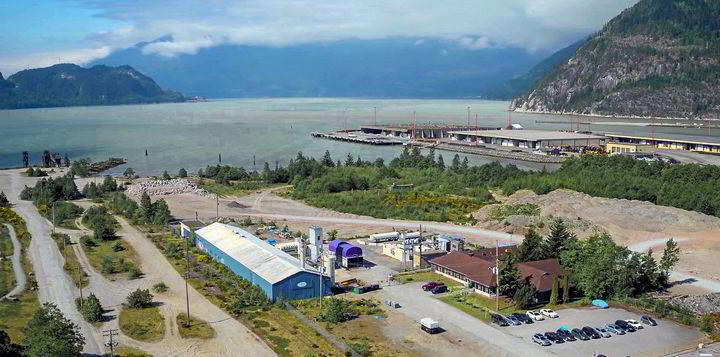Design and engineering work has started on a groundbreaking 500,000 to 1 million tonnes per annum direct air capture (DAC) plant destined to be built in Scotland, UK.
London-based Storegga — operator of the Acorn carbon capture and storage and hydrogen project in northeast Scotland — is working with Canadian player Carbon Engineering (CE) on the project, with the duo aiming to bring the facility online in 2026.
The plant will be the first large-scale facility of its kind in Europe, according to its proponents, who claim that, once complete, “it will be a model for how this clean infrastructure can be deployed across the continent to help achieve critical net zero targets, while also creating thousands of local jobs and businesses”.
Pre-FEED kicks off
After wrapping up a feasibility study earlier this year, Storegga and CE have now kicked off pre-front-end engineering and design work.
As well as progressing engineering, this work will focus on the costs and economic modelling of a DAC plant.
A shortlist of potential sites has been identified, with the final preferred locations to be selected as part of this pre-FEED work.
This phase of engineering is targeted for completion in the first quarter of 2022, with detailed engineering expected to follow in the following quarter.
Commenting on the start of early engineering, Storegga chief executive Nick Cooper said: “This announcement follows our recent funding from the UK government’s Department for Business, Energy & Industrial Strategy under the direct air capture and greenhouse gas removal technology innovation programme award.”
‘Putting UK on the map for DAC’
“DAC technology is critical to remove large quantities of CO2 from the atmosphere in order to meet our climate goals.
“The development of a DAC facility in the UK will put our country on the map as being at the forefront of net negative technologies and the technology will enable hard-to-abate sectors create plans to reach net zero emissions,” he stressed.
Steve Oldham, chief executive of Squamish, British Columbia-based CE, said: “In recent years we’ve observed a growing recognition of the need for large-scale removal of carbon dioxide from the atmosphere.
“At Carbon Engineering, we’ve spent the last decade optimising a highly scalable and affordable solution for removing carbon from the air and now our focus is on global deployment to help meet the climate challenge.”
He said CE’s “first one megaton (1 MMtpa) DAC facility is under way in the US, and we’re thrilled to be working with Storegga to develop a large-scale facility in the UK — the first of its kind and size in Europe.
‘Feasible, affordable, available’
“These facilities will demonstrate that large-scale DAC technology is a feasible, affordable and available tool that is ready to help bring global emissions down to net zero, and eventually net negative.”
In the US, Australian contractor Worley is currently carrying out FEED studies for a joint venture between Houston-headquartered independent Occidental Petroleum and California-based private equity player Rusheen Capital Management on a DAC plant to be built in the Permian basin.
The initial facility will capture 500,000 tonnes of CO2 annually and will be expanded to 1 MMtpa in future phases.
Scotland well placed
Storegga believes Scotland offers numerous advantages for the deployment of DAC technology, including abundant renewable energy sources to power the technology, existing infrastructure that can be redeployed, and a skilled oil and gas workforce with the skills needed to develop and operate DAC plants.
The company said Scotland also offers significant offshore storage sites where the captured atmospheric CO2 can be safely and permanently stored deep below the seabed.
DAC technology, when combined with secure geological storage, is designed to deliver permanent and verifiable removal of CO2 from the air, reversing the emissions process.
For sectors of the economy that are currently hard to abate — such as aviation, shipping as well as oil and gas — this form of greenhouse gas removal provides a route to address their carbon footprints and achieve net zero targets.
It also delivers a mechanism to eliminate emissions from the past, providing a tool to achieve full climate restoration, said Storegga.
DAC facilities can be located almost anywhere in the world, but the optimum sites would be close to geological storage sites.
Storegga’s Acorn project is currently in the detailed engineering and design phase of development and is due to be operational by the mid-2020s.
Source: Upstream Online

